A new report suggest North America’s boreal songbirds face a serious threat of decline and even extirpation in some areas.
The report says climate change is driving species further and further north, and “refugia” corridors of natural forest are needed to ensure safety and rest as they migrate north and south.
Jeff Wells (PhD) is the Science and Policy Director for the Boreal Songbird Initiative.
ListenThe report called, Conserving North America’s Bird Nursery in the Face of Climate Change points out that birds are important elements of the ecosystem helping with pollination, seed distribution and insect control, not just in the boreal forest but indeed throughout north and central America, and even into South America in some cases.
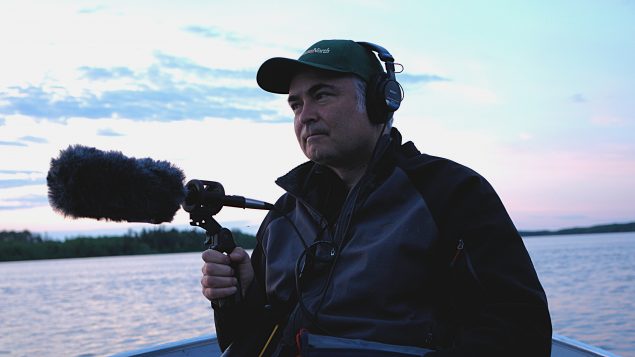
Jeff Wells (PhD) Boreal Songbird Initiative (supplied)
It also notes that warming and climate change is pushing plant and animal life further north. It says that some portions of the boreal forest- critical to the birds feeding, breeding, and nesting, will remain relatively unchanged over decades and that these area should be set aside for preservation in order to provide refuge for the birds.
Additionally, because a majority of these species are migratory, areas along the migratory routes or corridors, should also be set aside for preservation especially as the northern range shifts further north.
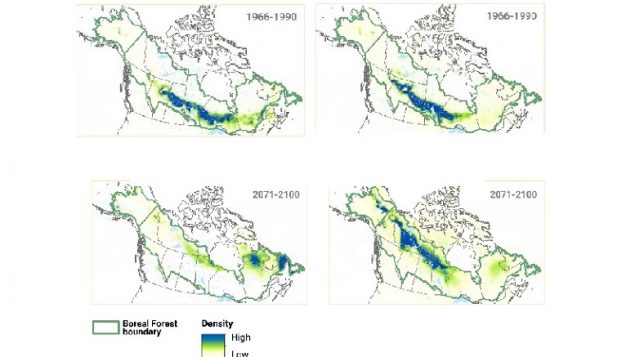
Current and projected range and diminishing extent of two species as warming changes climate and habitat and forces birds further north. (Left images- Bay Breasted Warbler, Right=Cape May Warbler (BSI report)
The report says the easiest path is to set aside large forested landscapes that are still intact which will benefit not only the birds but indeed many other species as well that are also under threat from a warming and changing climate.
While saying Canada’s vast boreal forest is one of the last ecologically intact regions of the Earth, it indicates that most of these areas remain unprotected.
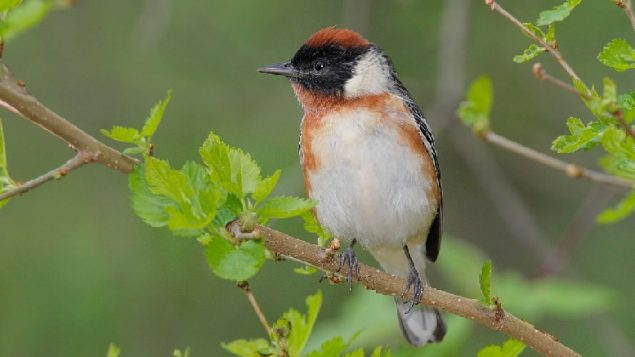
- Bay Breasted Warbler- almost 80% of the species breeds in the boreal forest. Modeling shows their number decrease dramatically due to changed habitat from climate change. (Jeff Nadler)
While the Canadian government’s signing of the Aichi Treaty commits it to protecting 17 per cent of land and inland waters by 2020, modern conservation plans indicate a minimum of 25 per cent landscape preservation is required to maintain a relatively healthy populations of birds, animals and aquatic ecosystems.
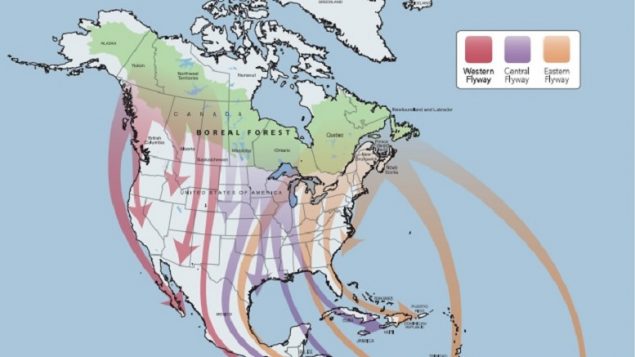
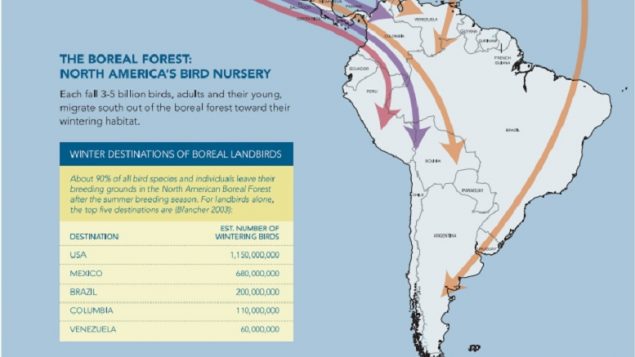
The report makes the following recommendations
- Dramatically decrease greenhouse gas emissions in order to lessen the future impacts to the environment and all who depend on it for survival. Along with capping industrial emissions, forest conservation efforts can also keep more of the carbon in storage and out of the atmosphere.
- Greatly increase land protections in areas that research indicates are likely to serve as climate refugia for many species, areas that will serve as climate corridors, and areas that currently serve as important reservoirs for healthy and resilient animal and plant populations.
- Create networks that include very large conserved areas—on the order of thousands of square kilometres—to adequately maintain migratory bird and mammal populations as well as the range of habitat diversity and ecosystem functions such as natural disturbance.
- Use projections of where birds – and other wildlife– will thrive in the Boreal Forest to inform which areas are protected as part of the UN Convention on Biodiversity.
Because of the world-wide effects of climate change, the Boreal Songbird Initiative report ends by saying Canada has a special responsibility to conserve the boreal forest.
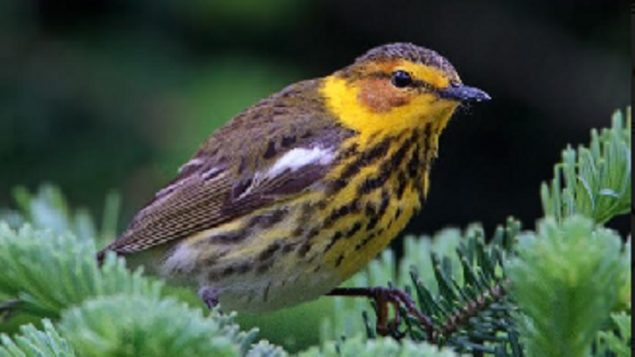






For reasons beyond our control, and for an undetermined period of time, our comment section is now closed. However, our social networks remain open to your contributions.